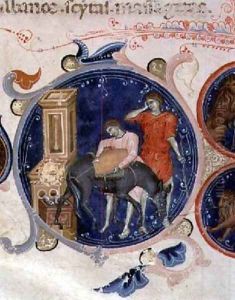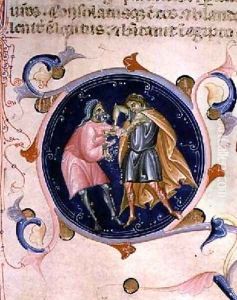Bernardino da Modena Paintings
Bernardino da Modena, also known as Bernardino de' Conti, was an Italian painter who was active during the late 15th and early 16th centuries. Despite the specific reference to Modena in his name, concrete details of his life, including his exact birth and death dates, remain obscure. The inclusion of 'da Modena' in his name suggests a connection with Modena in Emilia-Romagna, but it is not definitive proof that he was born there. His name surfaces in various documents indicating he was active in the art world from around 1471.
Bernardino da Modena's artistic career is often pieced together from scattered documentation and stylistic analysis of his surviving works. His style reflects the influence of Northern Italian painting of his time, and he is credited with contributing to the spread of Renaissance ideas and motifs in the region. He is mentioned in connection to the court of Ludovico Sforza in Milan, and this connection is vital in understanding his stylistic development, as Milan was a significant center of Renaissance culture.
There are only a few extant works attributed to Bernardino da Modena, and even among these, attributions are sometimes disputed due to the lack of signed or documented pieces. His painting style is characterized by careful attention to detail and a delicate approach to color and composition, reflecting the transition from the Gothic style to the emerging Renaissance aesthetic.
The precise date of Bernardino da Modena's death is similarly uncertain, with some suggestions placing it around 1525. His legacy is that of a regional artist who contributed to the rich tapestry of Renaissance art, influencing and being influenced by the great cultural shifts of his time. Bernardino's biography is a reminder of the many lesser-known artists who played a role in the art historical narrative, and whose lives and works are reconstructed through a combination of sparse historical records and the enduring visual evidence of their craft.

